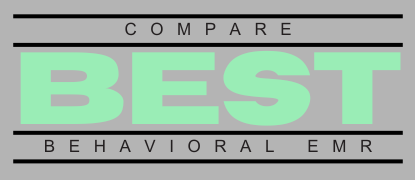
Feeling Drowned in Data? You’re Not Alone
If you’ve ever stared at your behavioral health EMR dashboard thinking, “What am I supposed to do with all these reports?” you’re in good company. Many practice owners and clinicians invest in powerful EHR and practice management systems, only to let the reporting tools collect digital dust. But those reporting features? They’re not just bells and whistles; they’re the key to unlocking smoother operations, better patient outcomes, and yes, more sanity in your day-to-day.
Let’s dive into how you can use your EMR reporting features efficiently, without needing a data science degree or a gallon of coffee.
Why Reporting Features Matter in Behavioral Health EMRs
Behavioral health is complex. You’re juggling client care, documentation, compliance, billing, and staff management, often all before lunch. EMR reporting features are designed to pull all those moving parts into one clear picture.
Here’s what great reporting tools can help you do:
- Track client progress over time with clinical outcome reports
- Identify scheduling gaps or overbooked providers
- Spot billing issues before they become revenue leaks
- Monitor clinician productivity and caseloads
- Ensure compliance with insurance and regulatory requirements
Whether you’re using Opus, TherapyNotes, SimplePractice, or another behavioral health EMR, these tools are likely built right in; you just need to know how to use them.
Start with the Questions You Want Answered
Before diving into the sea of filters, pie charts, and bar graphs, ask yourself: What do I really need to know?
Here are some common questions behavioral health practices ask:
- Are our no-show rates improving?
- Which services bring in the most revenue?
- Is each clinician meeting their productivity goals?
- Are treatment plans being updated on time?
Once you’ve got your questions, match them to the relevant reporting tools in your EMR. Most systems let you filter by date range, provider, service type, and more.
Popular EMR Reporting Features and How to Use Them
1. Clinical Outcome Reports
Want to track client progress and demonstrate treatment efficacy? Clinical outcome reports are your best friend. Look for tools that allow you to pull PHQ-9 or GAD-7 data over time.
For example, Opus allows you to generate visual trend lines of client progress, which is great for both internal review and insurance audits.
2. Financial and Billing Reports
Let’s be real, revenue keeps the lights on. Use your EMR’s financial reports to track:
- Claims submitted vs. claims paid
- Outstanding balances by client or insurer
- Revenue by service type or clinician
Platforms like TherapyNotes and Opus offer customizable billing reports that help you catch underpayments or delays before they snowball.
3. Scheduling and Utilization Reports
Are you optimizing your calendar? Scheduling reports can reveal:
- Top no-show time slots, so you can double-book wisely
- Underutilized providers or service types
- Peak times for new client appointments
This data can help you adjust availability, better staff your team, or even decide whether it’s time to bring on another clinician.
4. Compliance and Documentation Reports
Behavioral health practices live and die by their documentation. Use your EMR to monitor:
- Expired treatment plans
- Unsigned progress notes
- Missing intake forms or assessments
Some behavioral health EHRs, like SimplePractice or Valant, allow you to set up alerts or generate weekly reports to stay ahead of compliance issues.
Pro Tips for Making the Most of EMR Reporting Features
Ready to take your data game to the next level? Try these out:
- Schedule a “Reporting Power Hour” once a week. Block out time to review key metrics and make quick adjustments.
- Customize your dashboards. Platforms like Opus let you pin your favorite reports to your home screen for at-a-glance updates.
- Train your team. Don’t hoard the data! Teach your clinicians and admin staff how to run their own reports.
- Use visuals to tell the story. A simple bar chart can make a stronger case than a wall of spreadsheet numbers, especially when reporting to stakeholders or investors.
- Automate what you can. Many EMRs allow you to schedule recurring reports via email; set it and forget it.
Common Reporting Pitfalls (And How to Avoid Them)
Even the best tools can cause headaches if used poorly. Watch out for:
- Overcomplicating it. You don’t need 47 KPIs, stick to the ones that matter most.
- Ignoring the data. Don’t just generate reports; interpret them and act accordingly.
- Not validating your data. Garbage in, garbage out. Make sure clinicians are documenting consistently.
Not All EMRs Are Created Equal
If your current behavioral health EMR makes reporting feel like decoding ancient hieroglyphics, it might be time to shop around. Look for platforms with:
- User-friendly dashboards
- Customizable filters and export options
- Built-in templates for common behavioral health metrics
Opus scores well in these areas, especially with their visual client progress tracking and admin-friendly financial reports. But it’s always wise to compare multiple platforms to find the right fit for your workflow and goals.
Conclusion: Turn Your EMR Data into Action
The reporting features in your behavioral health EMR aren’t just for show; they’re strategic tools that can help you make better decisions, improve care, and grow your practice. So instead of dreading your monthly reports, think of them as your practice’s compass. With a little time and the right tools, you’ll be navigating smoother waters in no time.
Need help figuring out whether your current software is up to the task? Grab your free practice analysis and we’ll help you assess where you stand—and where you could go.
